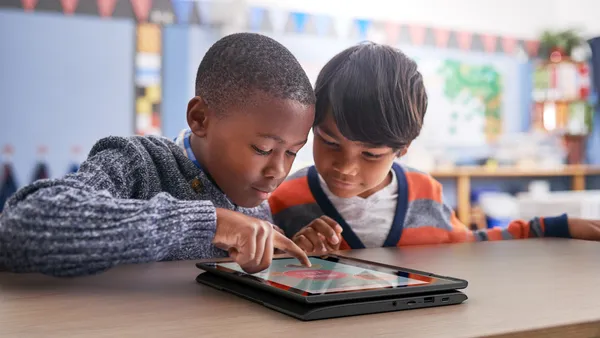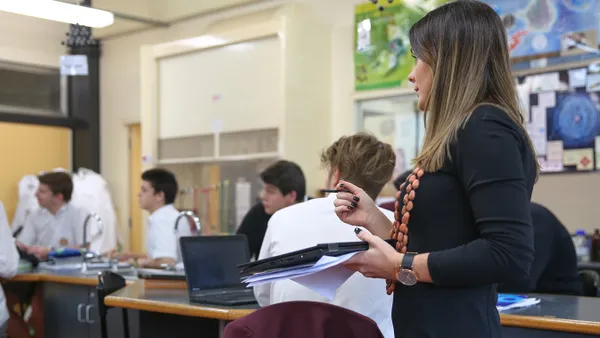The COVID-19 pandemic altered almost every aspect of life as we know it. Common habits like seeing family and friends, and going to work and school in person became luxuries that we could no longer afford. People across the globe began to feel a variety of different emotions ranging from frustration to anxiety, doubt and even fear. This became particularly evident in PreK-12 education, as teachers, students and their families entered uncharted territory.
The field of education has had its fair share of obstacles over the last year. Longstanding challenges in proficiency, well-being and equity were only exacerbated by the pandemic. But in the midst of uncertain and unprecedented times, a new sentiment emerged — optimism.
Districts across the country were forced to pivot and look to alternative resources and learning solutions — and technology did not disappoint. As leaders and educators began adopting education technology and leveraging it in new ways, they found themselves equipped and able to address these ongoing challenges more quickly, more deeply and more sustainably.
Tackling the Technology Problem in Education
Prior to the pandemic, much of the education industry was risk-averse, hesitant to take chances on new technologies that were unfamiliar. When schools were forced to shut down in-person learning in March 2020, one of the biggest questions educators looked to answer was how to rapidly implement remote learning programs to ensure quality learning would continue. This didn't simply involve addressing what curriculum and which digital learning solutions would be used, but more so centered around equity. For example, did all students have access to a computer or a reliable internet connection? District leaders also had to consider potentially problematic factors such as budget, affordability, possible IT challenges and more.
As a common theme in education, the solution to these issues did not come with an easy answer or a unanimous approach. Many districts across the country struggled with connectivity issues and lack of devices throughout 2020. However, this did improve as the school year went on, with 89% of educators stating they felt adequate support from their state-level government leaders who were helpful in navigating school closures and the impact of the pandemic, according to a study from Cambium Learning Group. Many agreed that these local leaders were able to provide educators with the resources their district needed to successfully practice distance learning.
Districts quickly realized they needed to get on board with new technology, as the long-term benefits of doing so outweighed the upfront issues, with 70% of district leaders stating that hybrid and remote learning could improve student performance overall. As the 2020-2021 school year came to a close, teachers shifted their focus to the upcoming and inevitable back-to-school season and how new technology would play a role in the everyday classroom moving forward.
New Opportunities Bring New Optimism
Although the feelings of uncertainty were strong in educators, the Cambium study found 75% believe that as a result of the pandemic, they are in a better position to solve problems than ever before. This has created a sense of cautious optimism among education leaders and teachers, as they begin to think about the future of education. As schools begin to re-open, many educators believe at least some aspects of education will begin to revert back to pre-pandemic practices. That said, it is clear that some of the procedures adopted during distance and hybrid learning are here to stay.
Considering that many districts will continue operating in remote or hybrid environments given the recent spike in the Delta variant, a reliance on technology will no doubt remain. Ensuring that these tools are simple to implement — and that students have equitable access — will be critical to supporting the education ecosystem as districts begin the 2021-2022 school year.
Focusing on the Future Now
There is hope on the horizon when it comes to the end of the pandemic, but education leaders — and all of us — still have a long road ahead. For far too long, the education system has been focused on a distant and intangible future. But this past year forced the world to evaluate the most immediate, pressing challenges for teachers and students. Going forward, if district leaders prioritize simple, effective solutions that have the ability to drive real change in the moment, the industry will be better equipped to weather massive change, all while making sure students and teachers feel seen, valued and supported.






 Dive Awards
Dive Awards




